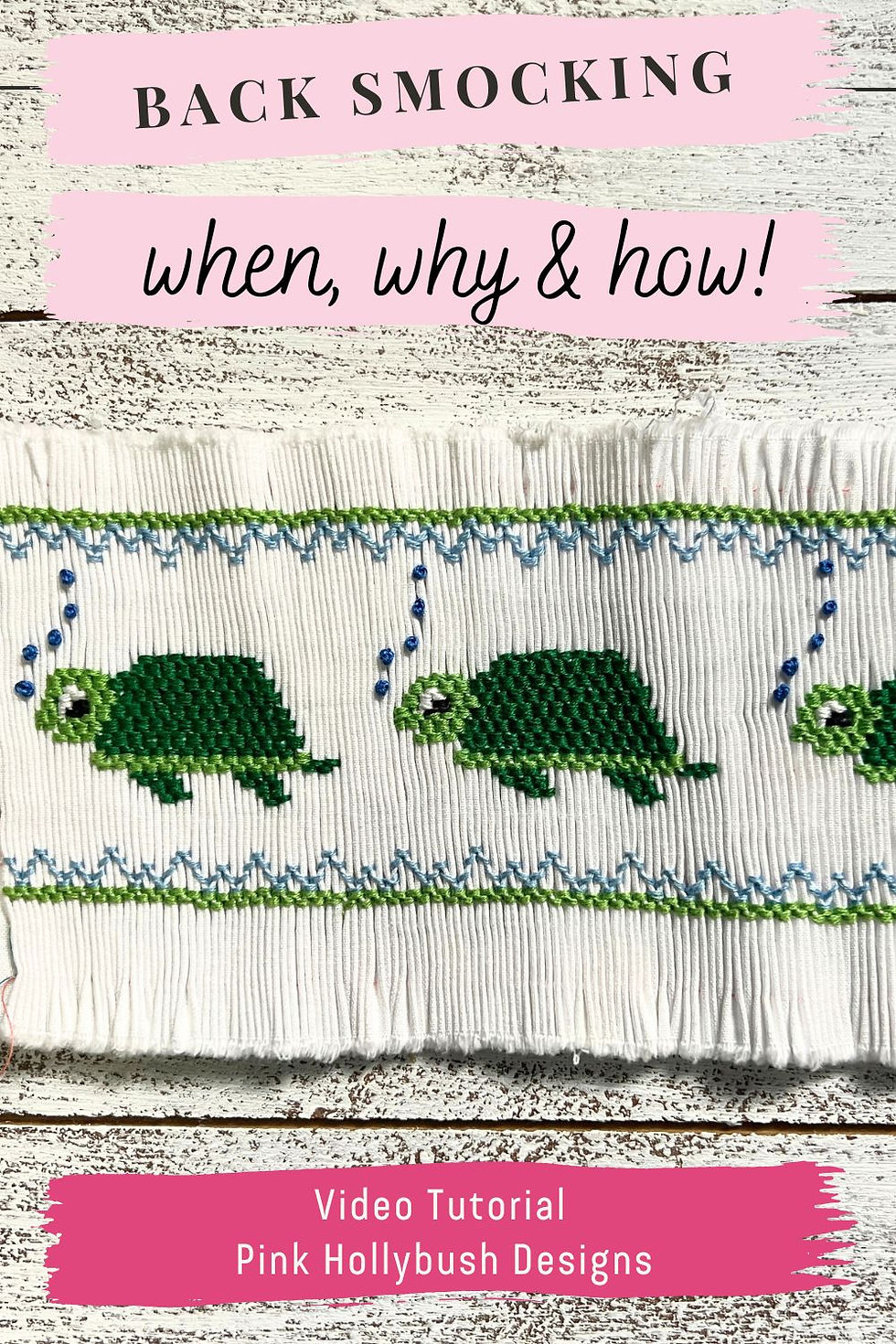Smocking Tutorial: The Van Dyke Stitch
- Lisa Hawkes
- Nov 8, 2021
- 3 min read

Time to tackle a more advanced smocking stitch! The Van Dyke Stitch is an old and very secure stitch since each stitch goes through 2 pleats. It is composed of a traveling stitch, and a locking stitch. The locking stitch can make Van Dyke difficult to rip out. Van Dyke is different from the basic smocking stitches in that it is stitched in the opposite direction, with the needle pointing in the direction to be stitched. The basic smocking stitches (cable, wave, trellis) are all "back" stitches, you move forward 1 pleat, and take a stitch pointing "back" to what you have already stitched. In other words, for the Van Dyke stitch, if you are right handed, you will be stitching from right to left and if you are left handed, you are stitching from left to right. Explaining that makes me so glad we have pictures! So, lets get started! At the bottom of the post you will find a video of me stitching the Van Dyke Stitch. I am right handed and so will be stitching from right to left, and using 3 strands of floss. Make sure to strip and squeak your floss! Come up in the valley between the first and second pleat, and take your needle through the second pleat, at a depth 1/2 way down the pleat. This gets your needle into position and is only done when starting a thread.

Keeping your floss below the needle, complete the first locking stitch by putting the needle through the first and second pleat and coming out the same hole where the thread is already exiting. Notice the needle is slightly angled on the locking stitch. I am angling it in the direction that I am going to travel to next.

Pull the thread taught to complete the locking stitch and travel up 1/2 row. Go through 2 pleats, an "old pleat" and a "new pleat" keeping the needle horizontal. The "old pleat" is the second pleat of the previous locking stitch and the needle already went through it when I stitched the first locking stitch. The "new pleat" has not been stitched yet.

Pull the needle through and the thread taught.

Complete the second locking stitch by going through the SAME 2 PLEATS as the traveling stitch, coming out at same spot, and angling the needle down toward where you will stitch next.

The traveling thread should always be in between the top and bottom locking stitches and the slight angling of the needle helps insure that. Travel back down, and go through an "old pleat" and a "new pleat'.

Complete a locking stitch through the same 2 pleats. A new pleat is only picked up when taking a travelling stitch.

Van Dyke can travel back and forth between a half space or full space row similar to the Wave Stitch, or it can travel in the same direction over several rows before reversing direction similar to the Trellis Stitch.

Stitching the Van Dyke stitch uses a lot of floss, so to tie off and start again in the middle of the row, on a traveling stitch, go through just the "old pleat" and then take the needle to the back of the work in the middle of the valley.

Come up with a new thread in that same valley, and take the needle through the "new pleat", completing the traveling stitch.

Complete the locking stitch and continue along the row.

When stitching Van Dyke, the needle leads and the thread follows as with all the basic smocking stitches, so as you move up, the thread is below the needle, and as you move down, the thread is above the needle. Another tip is to note that there are no empty pleats between the locking stitches when stitching a row of Van Dyke. The horizontal locking stitches but up against one another.

Here is a video of my stitching the Van Dyke Stitch. I hope it helps!
I want to thank Barbara Meger and Nancy Malitz, two wonderful ladies who teach for SAGA and who taught me how to stitch Van Dyke. Van Dyke is a fun stitch and I hope you give it a try! For more smocking tips and the Free Daisy Smocking plate, sign up for the newsletter!




